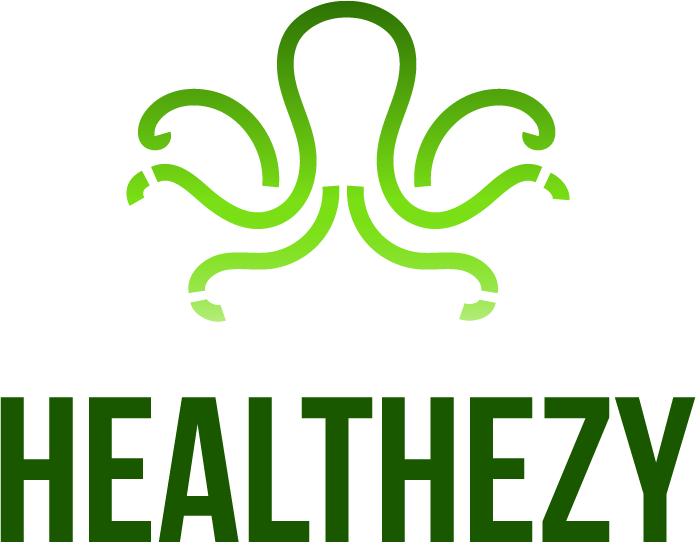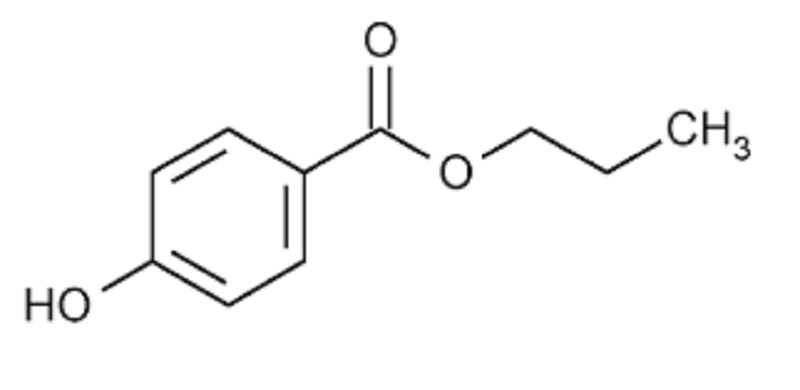Propyl Paraben is a synthetic compound (Propylparaben) commonly used as a preservative in various personal care and cosmetic products. It belongs to a group of chemicals known as parabens, which help extend the shelf life of products by preventing the growth of harmful microorganisms.
Historical Context
The use of parabens like propyl paraben in cosmetics and personal care items dates back to the early 20th century when the need for effective preservatives became apparent.
Production and Sourcing
Propyl paraben is typically produced through the chemical synthesis of p-hydroxybenzoic acid with propyl alcohol. It is sourced through chemical manufacturing processes and can be found in both natural and synthetic forms.

Applications
Propyl paraben is widely used in:
- Cosmetics: It is used in various cosmetics and skincare products, including creams, lotions, shampoos, and makeup, to prevent bacterial and fungal contamination.
- Pharmaceuticals: Some pharmaceutical formulations use propyl paraben as a preservative.
- Food: In some regions, propyl paraben is permitted as a food additive to extend the shelf life of certain food products.
Regulatory Framework
The use of propyl paraben is subject to regulations and safety assessments by health authorities in different countries. Maximum allowable concentrations are established to ensure product safety.
Consumer Concerns
Consumer concerns about propyl paraben often revolve around its potential health effects. Some individuals may experience skin sensitivity or allergies to parabens, while others raise questions about their long-term safety.
Health and Safety
Research on the safety of propyl paraben has generated discussions and varying conclusions. While regulatory bodies generally consider it safe within established limits, ongoing studies explore potential health risks associated with parabens’ use.
Applicable Products
Products that may contain propyl paraben include:
- Skincare and Beauty Products: Lotions, creams, makeup, and haircare items.
- Pharmaceuticals: Certain medications and topical treatments.
- Food Products: In some regions, propyl paraben is permitted as a food preservative.
Alternatives
In response to consumer preferences for natural and paraben-free products, the cosmetics and personal care industry has seen a rise in the use of alternative preservatives and natural ingredients.
Scientific Research
Scientific research on parabens like propyl paraben continues to investigate their safety, potential endocrine-disrupting effects, and long-term health implications.
Chemical Properties
Propyl paraben is a white crystalline powder with a faint odor. It is soluble in alcohol and ether but has limited solubility in water.
Case Studies
Case studies related to propyl paraben have explored its role in various formulations, its effects on skin, and its potential impact on human health.
Future Trends
Future trends in the cosmetics and personal care industry may involve further development and adoption of alternative preservatives and continued research into the safety and efficacy of existing ones like propyl paraben.
Opinions
Opinions on propyl paraben vary, with some advocating for its responsible use in cosmetics and others preferring paraben-free products due to concerns about potential health risks.
Warnings
Consumers with known sensitivities to parabens should be cautious when using products containing propyl paraben. Following product labeling and guidelines is advisable.
Synonyms
Propyl Paraben is also known by its chemical name “Propyl 4-hydroxybenzoate” and may be listed on product labels as such.
Conclusion
Propyl Paraben is a commonly used preservative in cosmetics, personal care items, and, in some regions, certain food products. Ongoing research aims to address concerns and ensure the safety of its use in consumer products. As consumer preferences evolve, the industry continues to explore alternative preservatives and formulations.







